Olympus M.Zuiko Digital ED 7-14mm 1:2.8 PRO review – Introduction
While compact system cameras first appeared as portable options for photographers looking for decent image quality without the bulk and complexity of an SLR, recently they’ve moved more into the enthusiast and professional realm. Models like the Panasonic Lumix DMC-GH4 and Olympus OM-D E-M5 Mark II now offer features, speed and build quality to rival the best APS-C SLRs.
There’s little point in having such aspirational cameras without equally good lenses, and to this end Olympus has started to build up a top-end ‘PRO’ line of optics. Launched alongside the M.Zuiko Digital ED 8mm Fisheye 1:1.8 PRO, the Olympus M.Zuiko Digital ED 7-14mm 1:2.8 PRO is a premium wideangle zoom for Micro Four Thirds cameras. It’s designed to accompany the existing 12-40mm f/2.8 and 40-150mm f/2.8, with these three lenses covering a total range equivalent to 7-300mm – all at f/2.8. With an RRP of £999.99, though, it’s not exactly cheap.
The 7-14mm isn’t the only wide zoom for Micro Four Thirds, with the highly-regarded Panasonic Lumix G Vario 7-14mm f/4 ASPH covering the same range but with a stop slower aperture for around £850, and the minuscule Olympus M.Zuiko Digital ED 9-18mm f/4-5.6 punching well above its weight at around £460. What the new 7-14mm is designed to offer, aside from the faster maximum aperture, is Olympus’s premium optics and build quality, including a splashproof design.
Olympus 7-14mm f/2.8 PRO image samples

Features
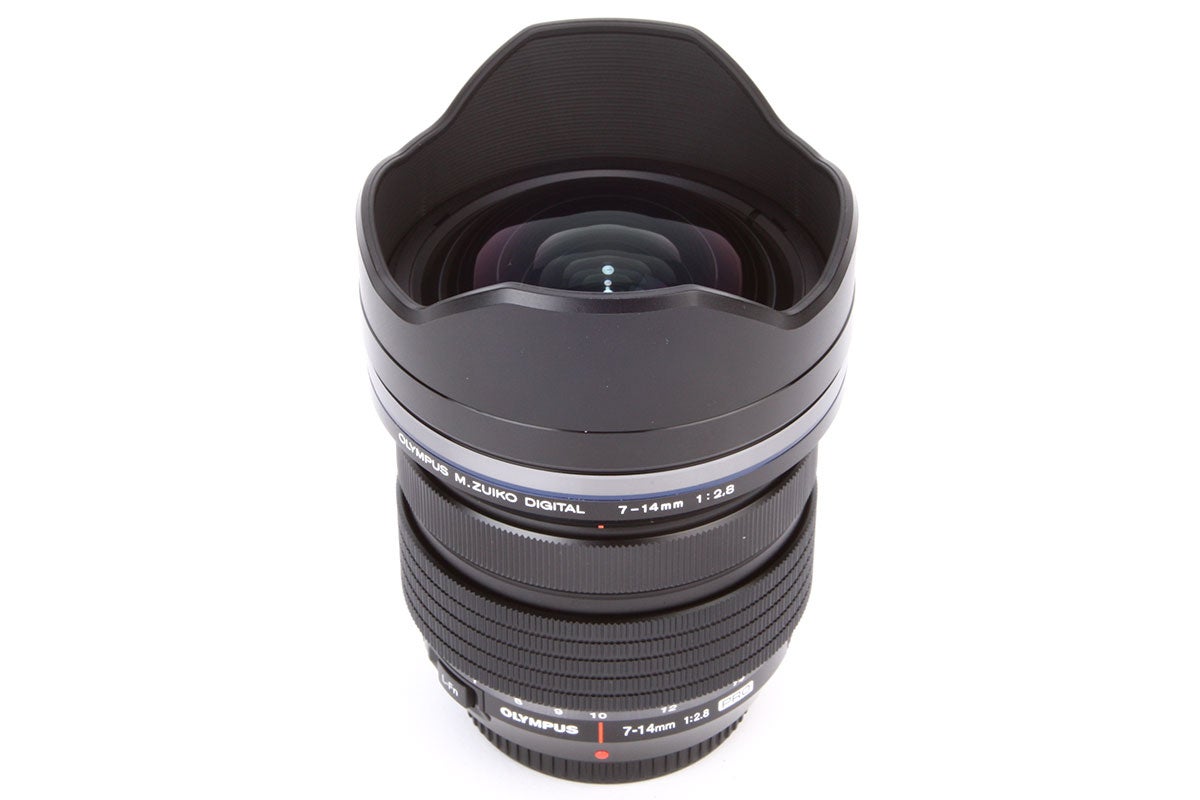
With an angle of view equivalent to 14-28mm on full frame, the 7-14mm is the joint-widest rectilinear lens for Micro Four Thirds. It has a constant f/2.8 maximum aperture, which is good for low-light work, and can be stopped down to f/22. The minimum focus distance is just 0.2m, giving scope for interesting wideangle close-ups.
The 7-14mm uses a complex optical formula with 14 elements in 11 groups, packed full of exotic elements. Two aspheric extra-low dispersion ED glass elements and a dual-sided aspheric element reduce distortion and peripheral aberrations, while three super ED glass elements, 1 ED glass element, and 2 high refractive index glass elements are used to minimise chromatic aberration. Olympus’s ZERO coating is employed to combat flare and ghosting, and the lens has an integrated hood.
Autofocus is handled by a stepper motor, and is lightning-fast, extremely accurate, and practically silent. Panasonic users should note that there’s no optical image stabilisation, because Olympus uses in-body systems instead.
Build and Handling
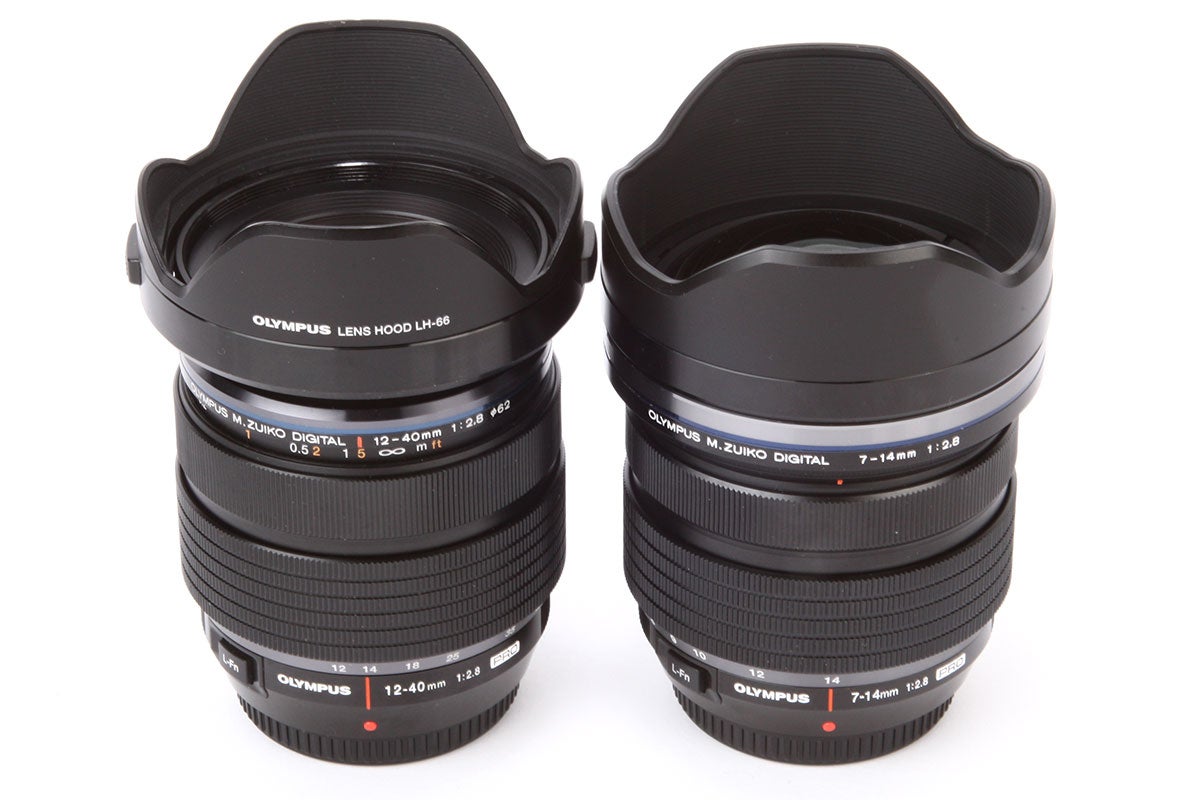
Anyone familiar with the Olympus 12-40mm f/2.8 will immediately recognise the 7-14mm as part of the same family. It uses almost exactly the same design language, with a solid-feeling metal barrel and finely ridged metal zoom and focus rings. The manual focus ring uses the same push-pull design as the 12-40mm too; pull it back towards the camera body and it reveals a distance scale, giving a traditional manual focus experience with hard end stops, despite its electronically-coupled focus-by-wire design. Turning the ring engages whichever focus aid you’ve selected on the camera body, either magnified view or peaking. Both the zoom and focus rings turn smoothly and precisely, with all the precision we’d expect from a ‘pro’ lens.
Measuring 79mm in diameter and 106mm in length, the 7-14mm turns out to be almost exactly the same size as the 12-40mm when the latter has its lens hood attached and is set to it shortest physical length (16mm position on the zoom). But at 540g it’s considerably heavier, with the additional weight front-loaded in the large domed front element. Zooming and focusing are both internal, so the lens’s length and balance on the camera never changes.
The barrel hosts an L-Fn button, whose function can be customised from the camera body. A rubber seal around the lens mount helps to keep out dust and water. As tends to be the case with lenses this wide, there’s no provision to attach filters, either at the front of the lens or behind the rear element. However we expect to see third-party adapters for square filter systems from the likes of Lee appear sooner rather than later.
Olympus 7-14mm 1:2.8 review – Image quality
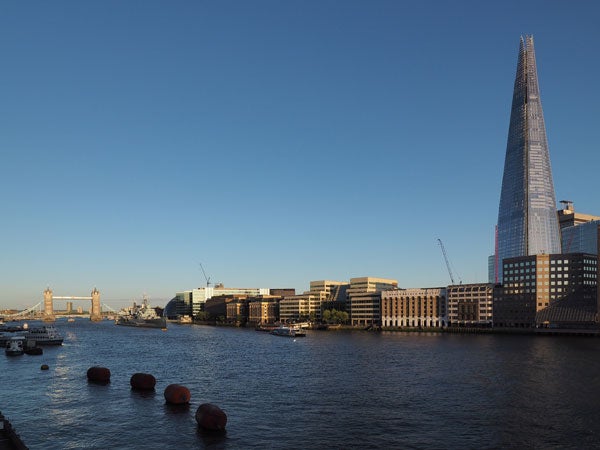
We’ve become used to seeing excellent lenses from Olympus over the years, with both the 12-40mm f/2.8 and 40-150mm f/2.8 delivering exemplary results. But wideangle lenses are infamously more difficult to design, and this shows up when we examine images from the 7-14mm. That’s not to say that the lens is bad, but typically for its type, it doesn’t deliver quite the same corner-to-corner sharpness as its siblings.
Having said that, the lens is exceptionally sharp in the centre of the frame, especially at its widest setting. Indeed when used with the OM-D E-M5 Mark II’s high resolution composite 40-million-pixel mode, it still clearly has resolution to spare. But at the 7mm position the image becomes visibly more smeared towards the extreme corners of the frame, particularly wide open at f/2.8. Stop down to f/5.6 and things improve considerably, but even then the corners never quite match the centre. It’s worth noting though that you don’t have to move too far into the frame for the image to sharpen up noticeably.
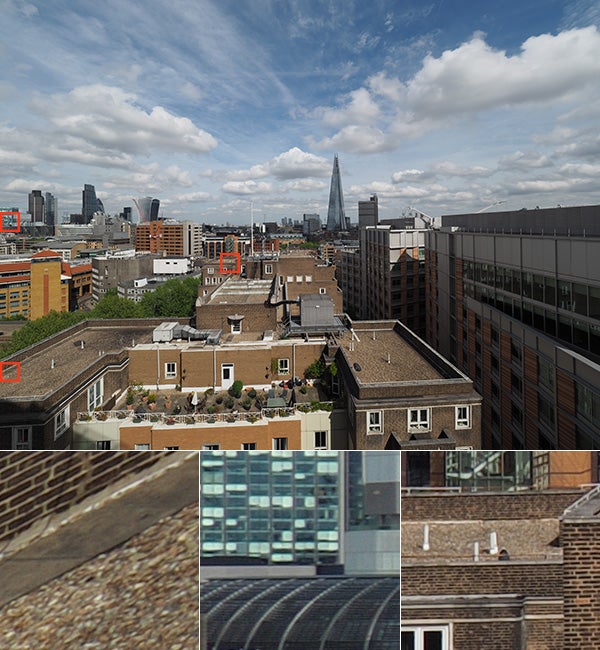
Zooming in, the disparity between the centre and corners of the frame reduces considerably, and at the 14mm setting the lens gives pretty even sharpness across the frame. In general the best results are obtained around f/5.6 and a stop either side. As usual for Micro Four Thirds, diffraction softens the image visibly at smaller apertures, and I wouldn’t normally use anything beyond f/8.
Needless to say it’s up to each photographer to decide for themselves whether this performance will meet their needs. Personally I’d be entirely happy with these results – with a wideangle lens, while it’s good to have excellent corner performance wide open, it’s often easy enough to stop down to f/5.6 without having to increase the ISO due to lack of light, even when shooting hand-held. This is particularly true for Olympus users, who can always employ the camera’s in-body image stabilisation.

Like most Micro Four Thirds lenses, the 7-14mm is designed around in-camera distortion correction. This means that curvilinear distortion is absent both from the camera’s JPEG output, and raw files processed though mainstream software. Uncorrected files, should you ever choose to make them, show visible barrel distortion at 7mm which goes away at 14mm. In much the same vein, most Micro Four Thirds cameras will now also remove colour fringing towards the corners of the frame due to lateral chromatic aberration.
Flare control is an important aspect of such a wideangle lens, and here the 7-14mm also performs pretty well. Contrast and detail holds up very well when shooting directly into the sun, which is great if you like shooting dramatic contre-jour images.
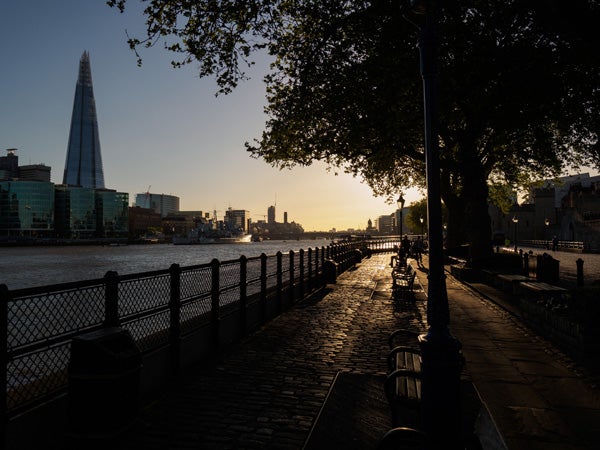
Olympus 7-14mm 1:2.8 review – Technical tests
Sharpness (7mm)
Wide open the centre of the frame is spectacularly sharp, but the corners lag a long way behind in our Applied Imaging tests. The corner sharpness improves on stopping down, but even around the optimum setting of f/5.6, it can’t match the exceptional sharpness of the middle of the image. Stopping down further softens the image due to diffraction, with f/11 marginal and f/22 barely usable.
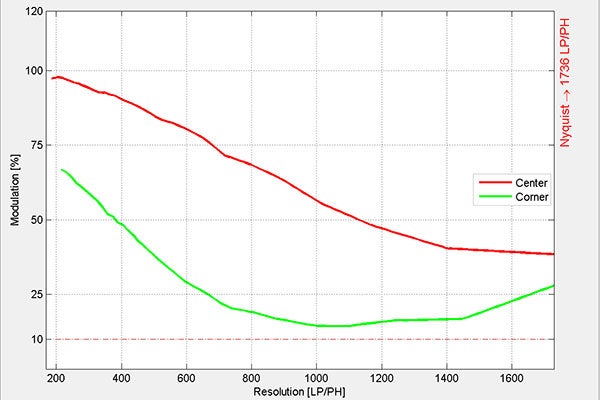
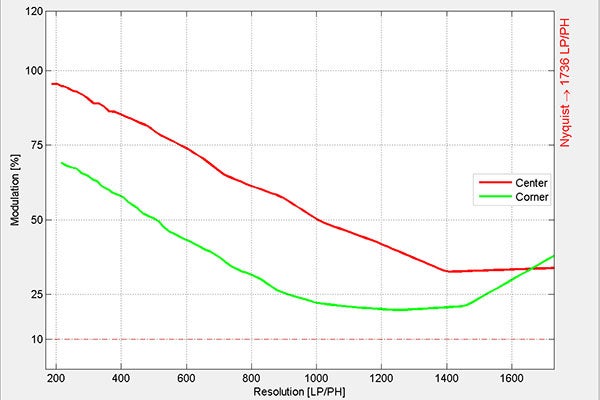
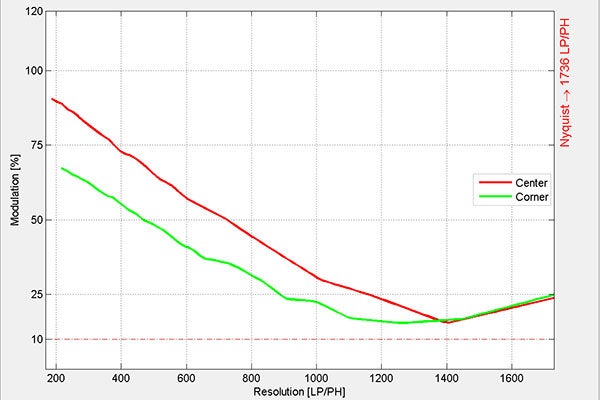
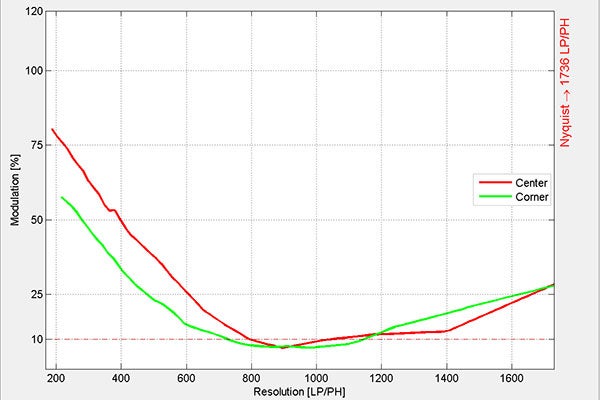
Sharpness (10mm)
Sharpness evens out across the frame at 10mm – the corners are rather sharper than at 7mm, especially wide open, but the centre perhaps isn’t quite so sharp. As usual for Micro Four Thirds you’ll get best results around f/5.6 (and a stop either side). Again f/11 is getting distinctly soft, and f/22 should be avoided.
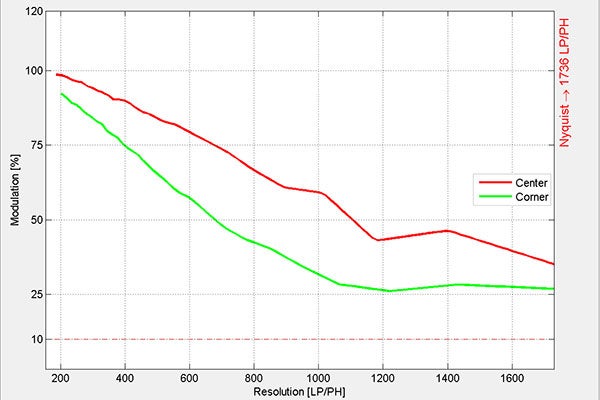
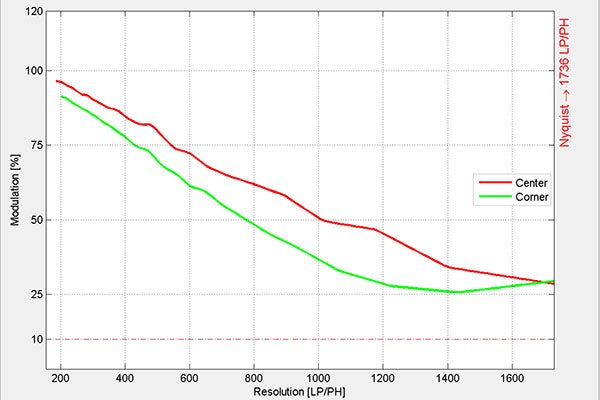
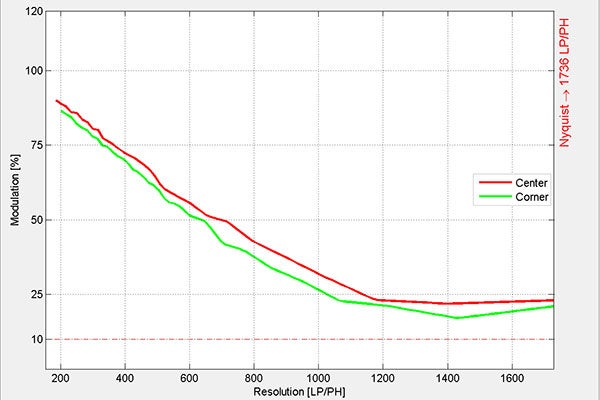
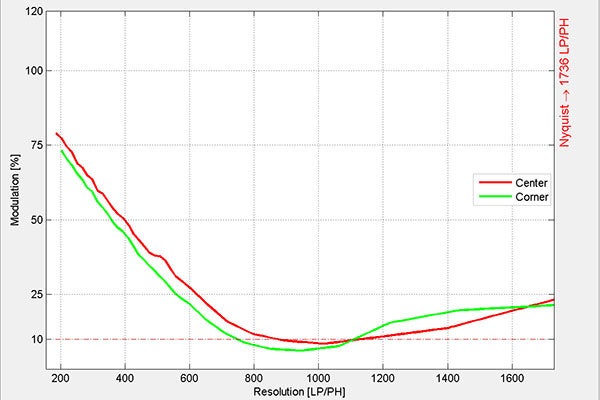
Sharpness (14mm)
It’s at 14mm where the lens gives its most even results. Now edge sharpness is very close indeed to the centre, even at f/2.8, and there’s barely any improvement on stopping down to f/5.6. But the laws of optics being what they are, smaller apertures give progressively softer images.
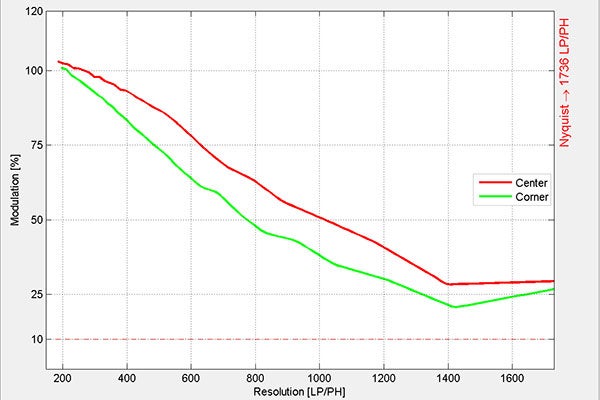
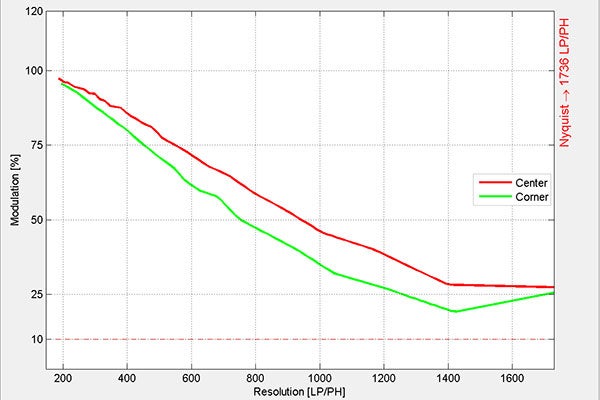
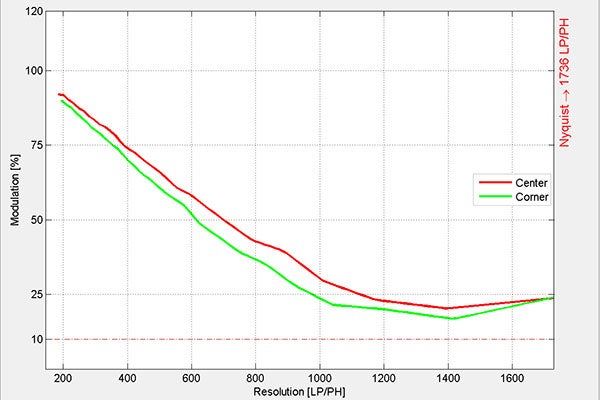
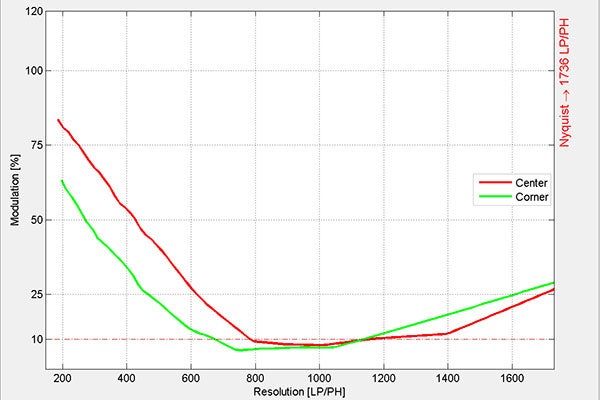
Real-world examples
MTF measurements like those above can look a bit esoteric, and difficult to visualise in terms of actual image quality. The examples below should give a slightly better idea of what this all means.
First, lets look at the 7mm setting, You should be able to see that the centre of the frame is startlingly sharp, however at f/2.8, the corner shows clear radial smearing that explains the poor MTF reading. Stopping down to f/5.6 substantially reduces this effect, although it’s not gone altogether. Needless to say it’s up to each photographer to decide for themselves whether this performance will meet their needs (it’s also worth nothing that you don’t have to move too much further into the centre of the frame for the image to sharpen up considerably).
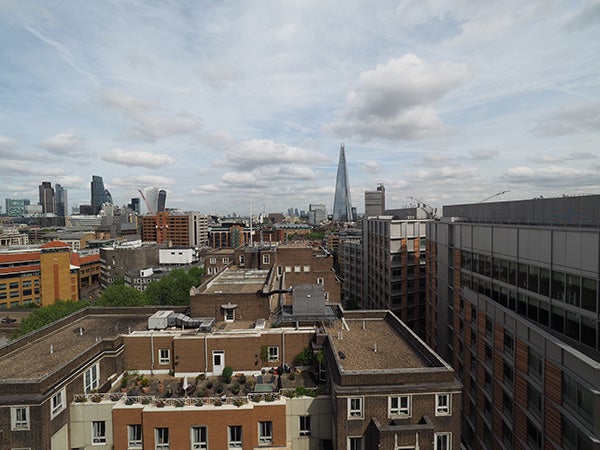
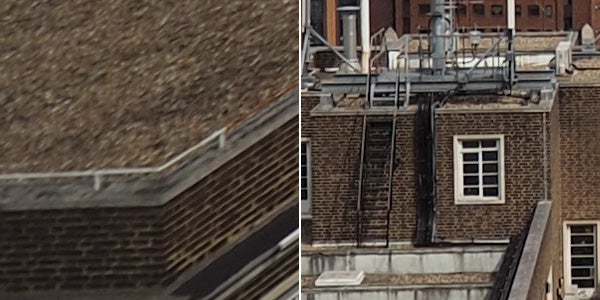
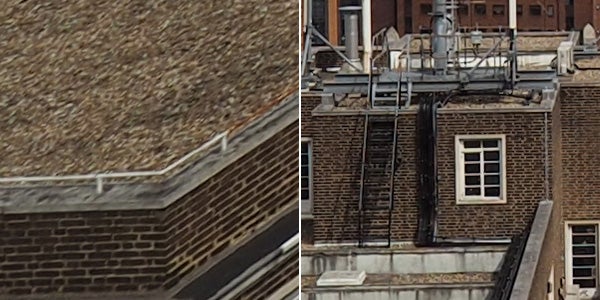
Next let’s look at the 10mm setting, in the middle of the zoom range. Again the centre is ludicrously sharp wide open, to the extent that it’s inducing coloured moire patterns in the brickwork, but now the corner is much improved, even at f/2.8. At f/5.6 it sharpens up further still, although it can’t quite match the centre of the frame:
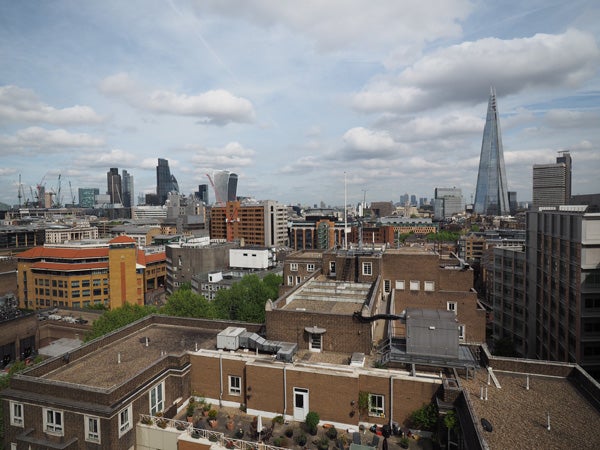
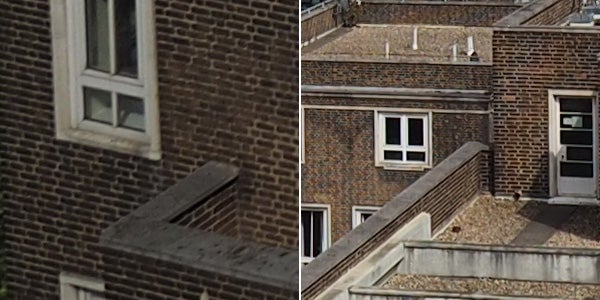
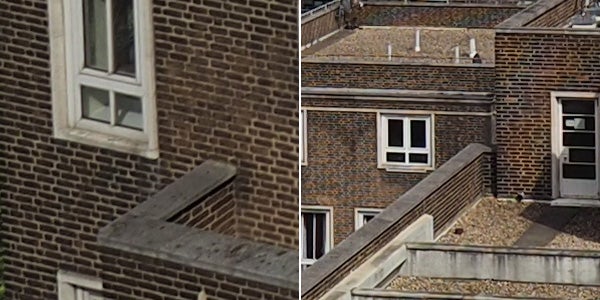
Finally, 14mm. Here the lens is exceptionally sharp in the centre, and only slightly softer at the corner, even at f/2.8. It’s very difficult to find fault with the performance at f/5.6.
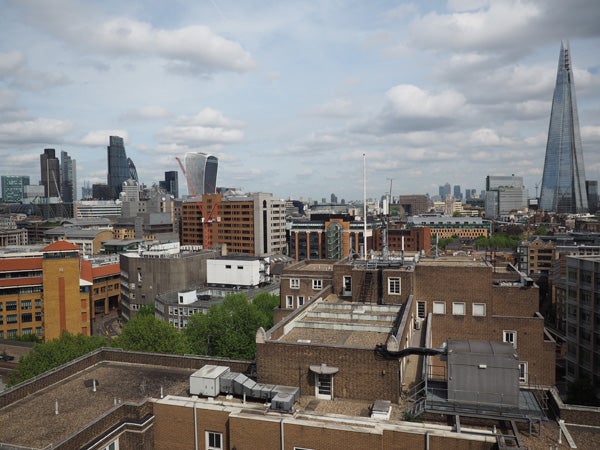
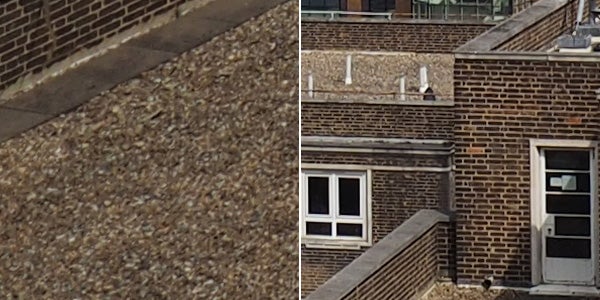
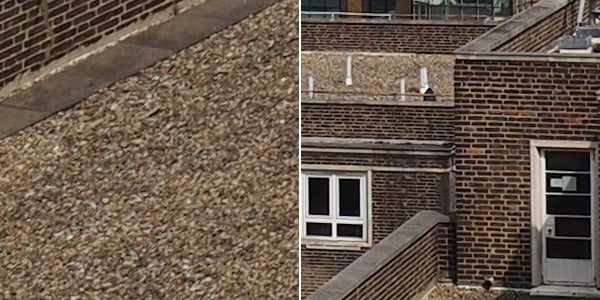
Hopefully this should all give a better idea of how well the lens is capable of performing in the real world. Personally I’d be entirely happy with these results – with a wideangle lens, while it’s good to have excellent corner performance wide open, it’s often easy enough to stop down to f/5.6 without having to increase the ISO due to lack of light, even when shooting hand-held. This is particularly true for Olympus users, who can always employ the camera’s in-body image stabilisation.
Olympus 7-14mm 1:2.8 review – Shading and distortion
Our tests show that the 7-14mm show relatively low levels of vignetting, certainly not enough to be disturbing. At worst we see an illumination falloff of about 0.5 stops in the corner of the frame.
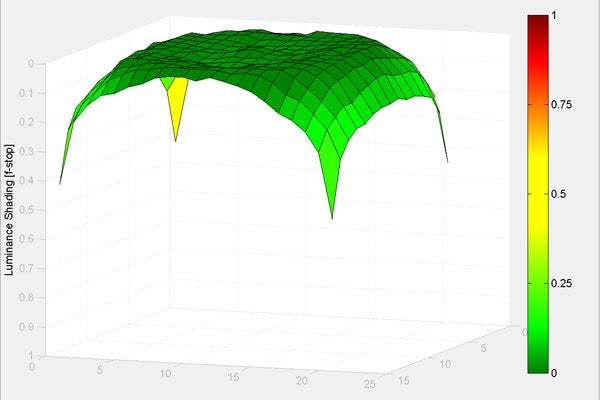
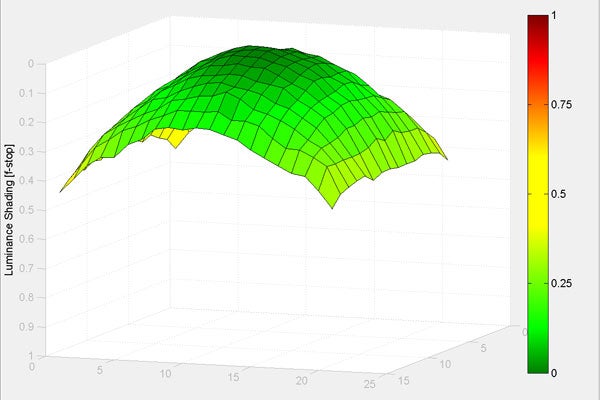
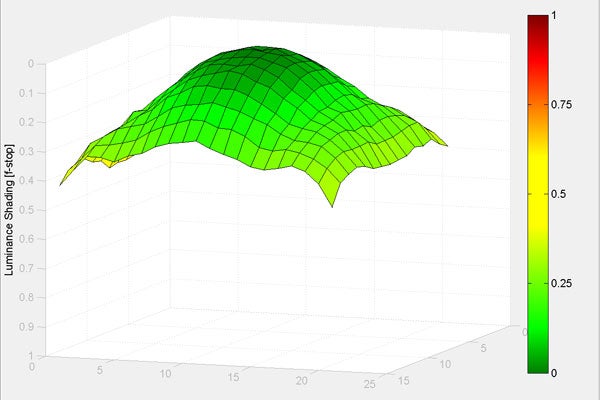
Distortion
Most Micro Four Thirds lenses are designed around in-camera distortion correction, with some barrel distortion usually allowed in the image that’s projected onto the sensor, to enable better correction of other optical aberrations. This distortion is then corrected in software throughout the process of viewing and taking a photograph, in a fashion that means few photographers will even notice that it’s going on, let alone care.
Our tests reveal that the 7mm works to this design, with distortion near-perfectly eliminated in JPEG processing, As the correction parameters are also stored in the raw file, most raw converters should be able to apply equally effective compensation.
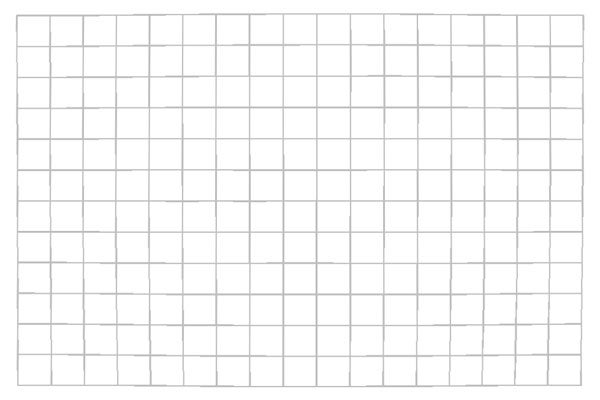
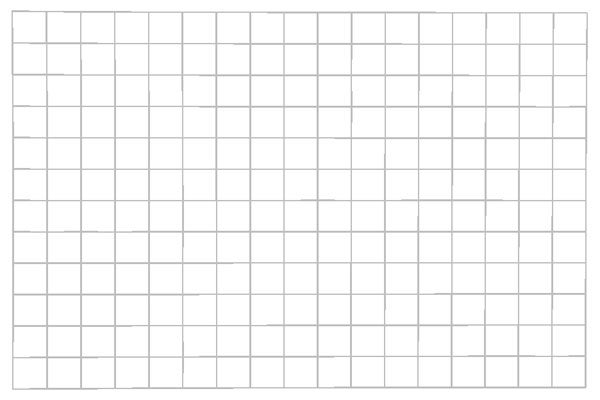
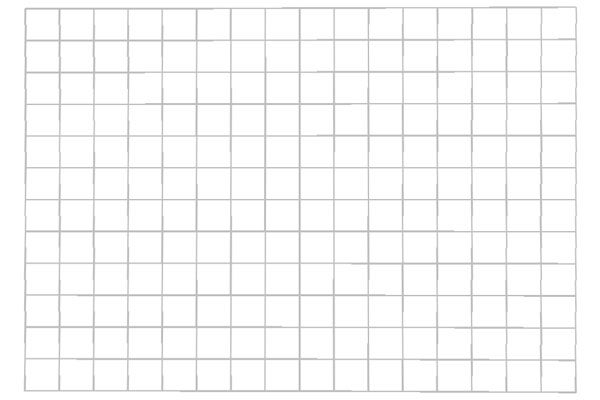
It is however possible to use a raw converter that doesn’t necessarily apply corrections, such as DCRaw. Looking at uncorrected raw files this way, we see that the 7-14mm shows quite strong barrel distortion at wideangle, which progressively reduces to near-perfect correction at the 14mm position.
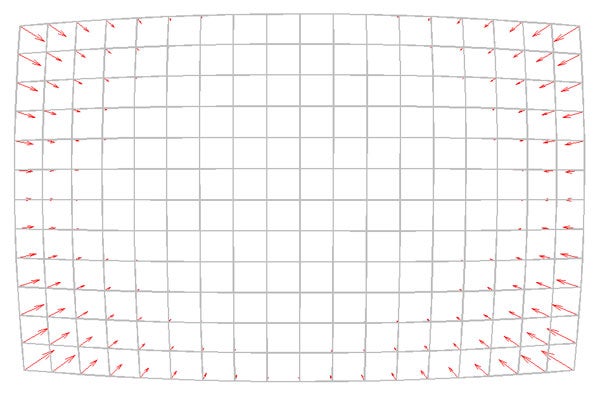
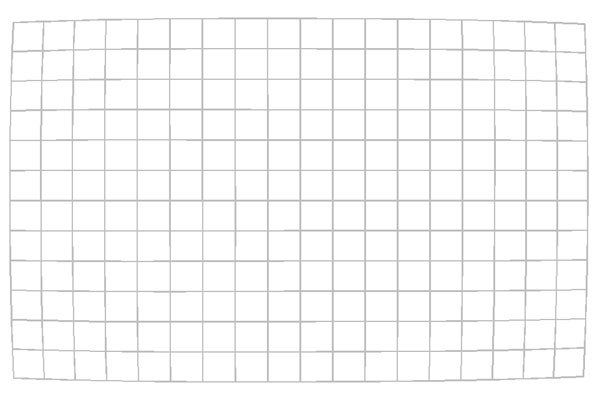
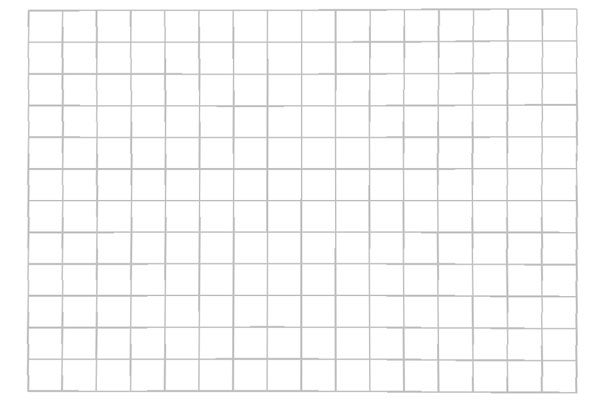
Olympus 7-14mm 1:2.8 review – Conclusion
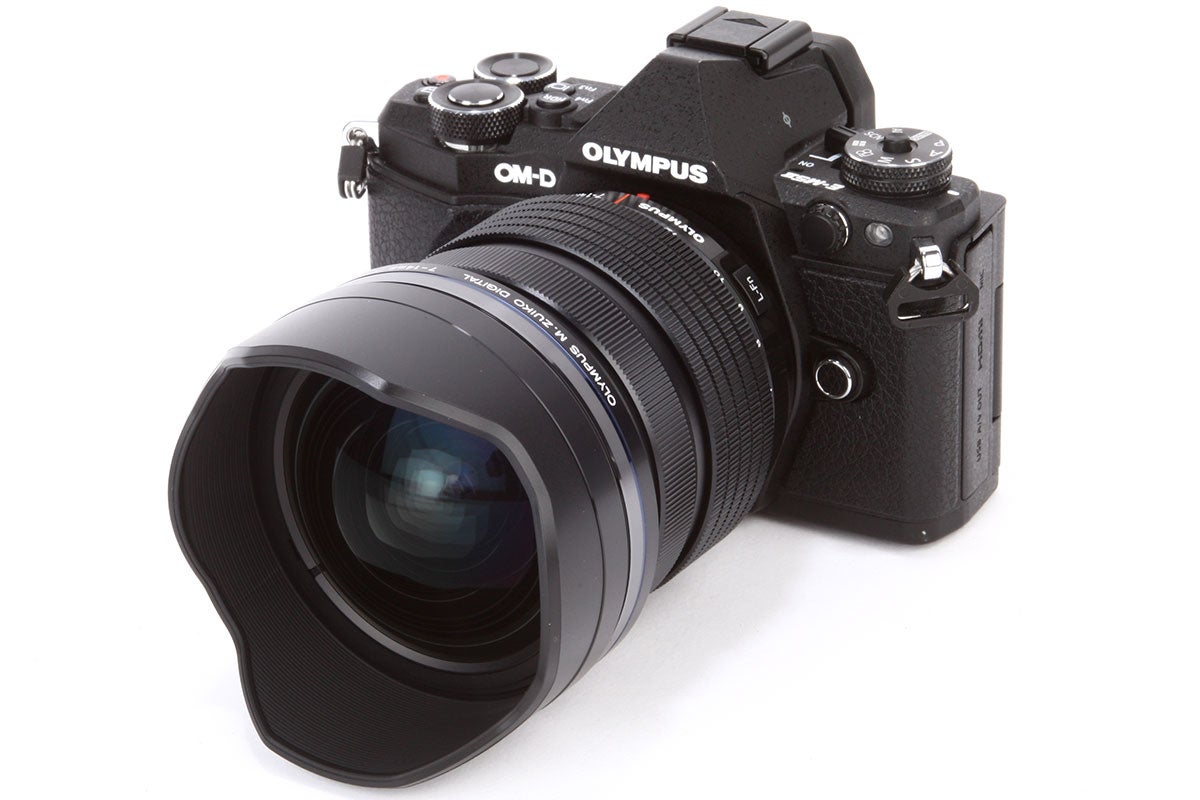
With the 7-14mm f/2.8, Olympus has completed its line-up of professional-level fast zooms, and while it’s possible to nit-pick aspects of the image quality, overall the lens performs very well. It handles nicely on the camera, and is impressively compact given its specification. Optically it’s very good too, with the only possible critique being somewhat soft corners at wideangle, especially at f/2.8. But this is a common flaw with wide zooms, and as with many other designs of this type, it’s confined to a relatively small area of the frame.
Aside from this, though, Olympus appears to have a worthy companion to the superb 12-40mm f/2.8 and 40-150mm f/2.8 PRO zooms on its hands, and this makes the Micro Four Thirds system even more interesting for photographers who might be looking to ditch their SLRs and travel light. It’s a hefty investment to buy into a whole new system, but the quality of Olympus’s (and indeed Panasonic’s) glass is a strong attraction.
The post Olympus M.Zuiko Digital ED 7-14mm 1:2.8 PRO review appeared first on Trusted Reviews.
Author: Andy Westlake
This article comes from Trusted Reviews and can be read on the original site.
